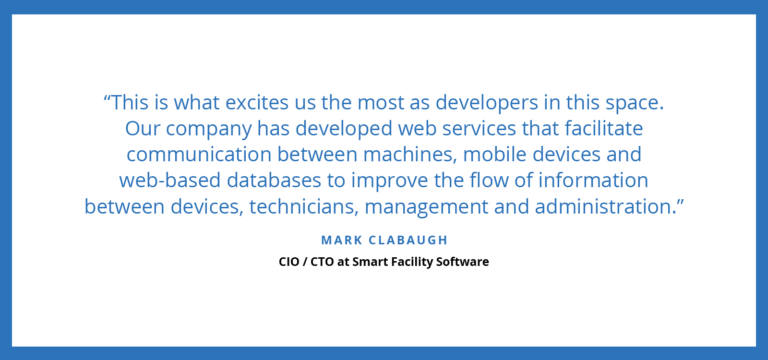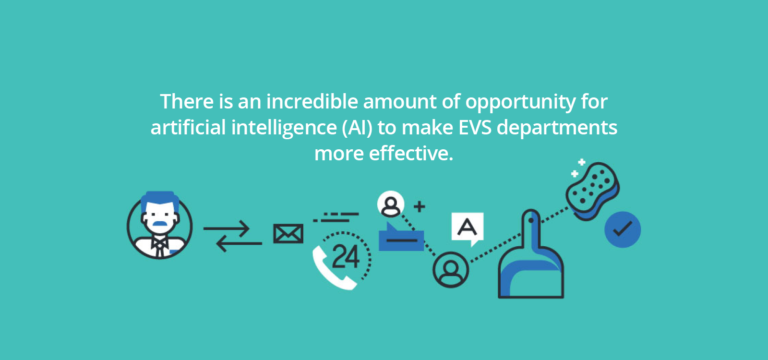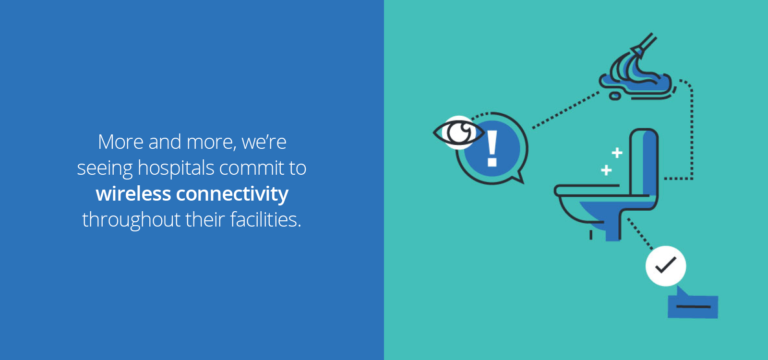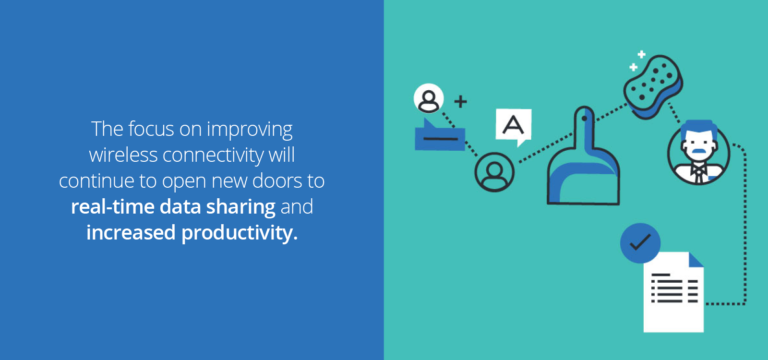insights
Three Technology Advancements Using Hospital Facility Data
New Ways to Find EVS Efficiencies
In today’s hospitals, environmental services departments need to make data-backed decisions. This demand puts them at pivotal point — to find and adopt technological advancements to capture and harness the power of facility data. Medical facilities and EVS managers who embrace new technologies have the opportunity to empower their workforce, increase efficiency and improve the cleanliness and safety of their facility.
In our work with over 950 hospitals, we are seeing three data and technology developments EVS departments can harness to find even more efficiencies in their daily operations.
1. The Internet of Things: Putting Machine Data in Management’s Hands
The Internet of Things (IoT) is the concept of an interconnected network of devices that enable seamless communication. Mark Clabaugh, CIO/CTO at Smart Facility Software, claims this is one of the most powerful potential advancements in EVS technology today:
This communication enables what Mark calls “real-time situational data,” allowing managers to receive facility, work progress and status information wherever they are and manage their staff from mobile devices. This improved flow of information makes managers more effective on the floor and staff more responsive to facility needs. This is part of our ongoing mission to make managers mobile.
What’s Next for IoT Technology in Facility Management?
Now, we’re working to take the next step to create the same seamless communication we’re enabling with personnel and implement it with machines and devices.
One of the largest opportunities is in the space of UVC robotics. It’s proven that using ultraviolet disinfection systems helps reduce HAIs. But, according to a Duke University study, there are still two large barriers to making these machines as effective as possible:
- Timely and accurate identification of rooms that would benefit from UV disinfection.
- Overcoming real or perceived time constraints to allow ES staff to properly use the system.
One success we’ve experienced at Smart Facility Software is working with Solaris to integrate their UVC machines with our infection prevention solution. In addition to developing a plan for success, our software allows the facility to definitively identify rooms in need of disinfection, better manage resources, and meet disinfection goals and monitor progress through the program’s various views, dashboards and reporting.
We are now looking to work with machine manufacturers, paper dispensers, and other devices to monitor and improve how machines directly communicate with management. IoT technology allows us to get instant reports from machines — importing data directly into a web-based application — to immediately document conditions that need a manager’s attention and assign tasks through our Service Optimizer platform. This type of instant reporting from the app will allow actions to be taken in real-time to address issues, making EVS departments more proactive and responsive to hospital needs.
2. Artificial Intelligence: Automatic Response to a Facility’s Developing Trends
There is an incredible amount of opportunity for artificial intelligence (AI) to make EVS departments more effective. Theoretically, a machine has the ability to take raw data and process it through an algorithm to identify trends and proactively avoid recurrent issues.
One application we’ve been researching at Smart Facility Software is how AI can be applied to policing surveys. We’re working to capture data on issues found in various public spaces at different times of day to find trends and use predictive modeling to head off issues in advance.
Here’s an example: If we find paper products in the Main Lobby Women’s Restroom are empty by 3PM on most days, then the system can automatically assign a task to check supplies before the problem appears and inconveniences the patient or visitor.
Likewise, in the case of project work, a facility may have a once a year frequency for floor refinishing in a certain area. But, if quality scores from inspections begin to trend downward due to high traffic, an alert can be sent to managers notifying them that the issue needs to be addressed sooner than planned.
What’s Next for Artificial Intelligence in Facility Management?
While AI technology is extremely promising, kickstarting the opportunities requires a lot of data collection so that accurate and predictable algorithms can be derived.
At Smart Facility Software, our web-based and mobile EVS software is well-positioned to collect and organize this massive amount of data. With this data, we can develop data models that automatically adjust tasks like frequency of cleaning. We’re excited to continue research in this area to look for new and innovative ways to use AI to improve facility management.
3. Seamless Connectivity and More Robust Devices
More and more, we’re seeing hospitals commit to wireless connectivity throughout their facilities. In many hospitals, there used to be only a few dedicated areas where you could connect to the internet. Imagine needing to find time to sync your device and then being inundated with information from the past few hours. Now, as connectivity becomes seamless, EVS managers are able to get real-time information anywhere in the hospital.
Not only has wireless connectivity improved, mobile devices are more robust and tailored to workplace productivity needs. These improvements to iOS and its developer tools allows us to create even more robust product features that would have been unthinkable years ago. Now, we can store more information and communicate effectively using mobile phones and tablets, making it easier than ever to know how your staff is performing, the amount of work they get done, and if situations arise that need immediate attention.
What’s Next for Connectivity and Devices in Facility Management?
The focus on improving wireless connectivity will continue to open new doors to real-time data sharing and increased productivity.
We see extensive opportunity in regard to communications and remote monitoring of situations. Devices, cameras and video technology are advancing at a rapid pace, which improves the effectiveness of computerized maintenance management systems. Also, as the use of devices like tablets becomes standard in EVS departments, there are opportunities for BlueTooth technology to make a large impact on how other devices, like UVC machines, are controlled. This ease of use will make these machines easier to adopt and will maximize their effectiveness.
Driving Innovation in Facility Management Software
At Smart Facility Software, we’re constantly looking for ways to anticipate, adapt to and develop software based on better data and emerging technologies. We want to help our clients use technology to make their jobs easier, their teams more effective and their hospital cleaner and safer.
If you’re ready to take advantage of cutting-edge technology at your medical facility, reach out to me directly at mclabaugh@smartfacilitysoftware.com or call us at 800–260-8665.





